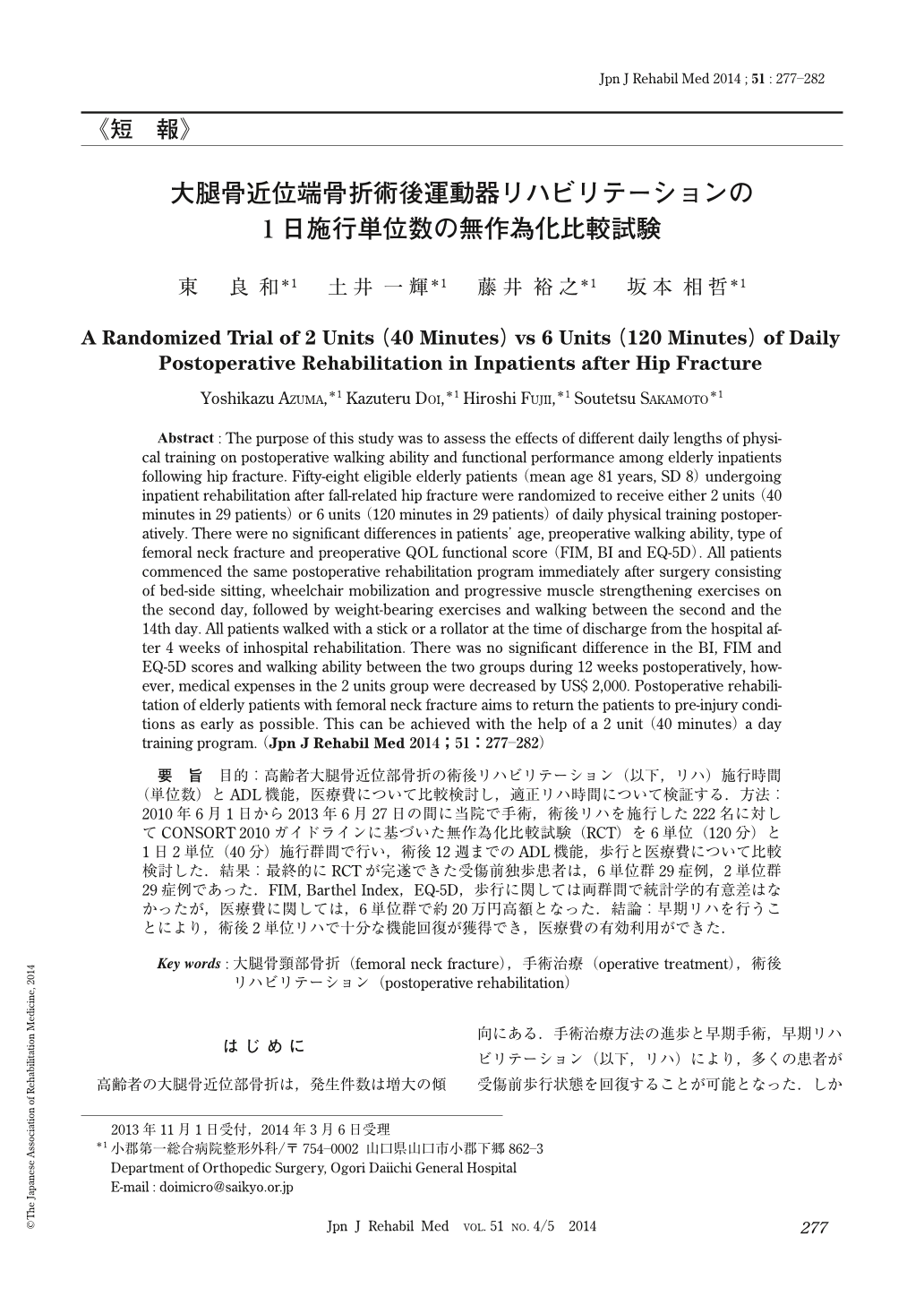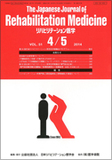Japanese
English
- 販売していません
- Abstract 文献概要
- 1ページ目 Look Inside
- 参考文献 Reference
要旨 目的:高齢者大腿骨近位部骨折の術後リハビリテーション(以下,リハ)施行時間(単位数)とADL機能,医療費について比較検討し,適正リハ時間について検証する.方法:2010年6月1日から2013年6月27日の間に当院で手術,術後リハを施行した222名に対してCONSORT2010ガイドラインに基づいた無作為化比較試験(RCT)を6単位(120分)と1日2単位(40分)施行群間で行い,術後12週までのADL機能,歩行と医療費について比較検討した.結果:最終的にRCTが完遂できた受傷前独歩患者は,6単位群29症例,2単位群29症例であった.FIM, Barthel Index,EQ-5D,歩行に関しては両群間で統計学的有意差はなかったが,医療費に関しては,6単位群で約20万円高額となった.結論:早期リハを行うことにより,術後2単位リハで十分な機能回復が獲得でき,医療費の有効利用ができた.
Abstract : The purpose of this study was to assess the effects of different daily lengths of physical training on postoperative walking ability and functional performance among elderly inpatients following hip fracture. Fifty-eight eligible elderly patients (mean age 81 years, SD 8) undergoing inpatient rehabilitation after fall-related hip fracture were randomized to receive either 2 units (40 minutes in 29 patients) or 6 units (120 minutes in 29 patients) of daily physical training postoperatively. There were no significant differences in patients' age, preoperative walking ability, type of femoral neck fracture and preoperative QOL functional score (FIM, BI and EQ-5D). All patients commenced the same postoperative rehabilitation program immediately after surgery consisting of bed-side sitting, wheelchair mobilization and progressive muscle strengthening exercises on the second day, followed by weight-bearing exercises and walking between the second and the 14th day. All patients walked with a stick or a rollator at the time of discharge from the hospital after 4 weeks of inhospital rehabilitation. There was no significant difference in the BI, FIM and EQ-5D scores and walking ability between the two groups during 12 weeks postoperatively, however, medical expenses in the 2 units group were decreased by US$ 2,000. Postoperative rehabilitation of elderly patients with femoral neck fracture aims to return the patients to pre-injury conditions as early as possible. This can be achieved with the help of a 2 unit (40 minutes) a day training program.

Copyright © 2014, The Japanese Association of Rehabilitation Medicine. All rights reserved.


